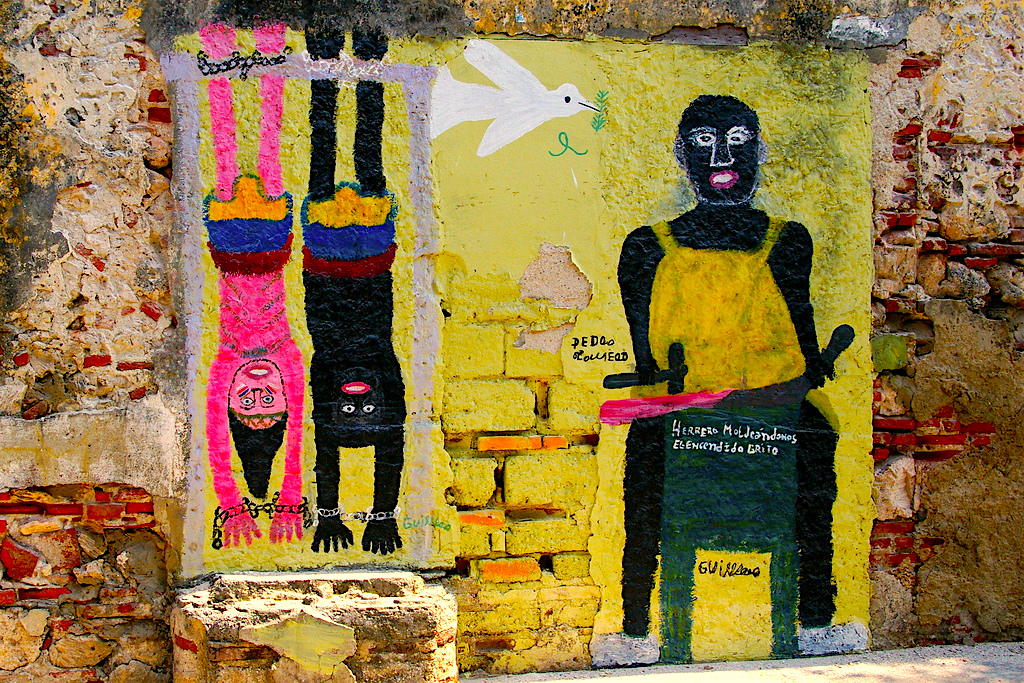As Borders Shut, Migrants and Refugees Are First to Take the Hit
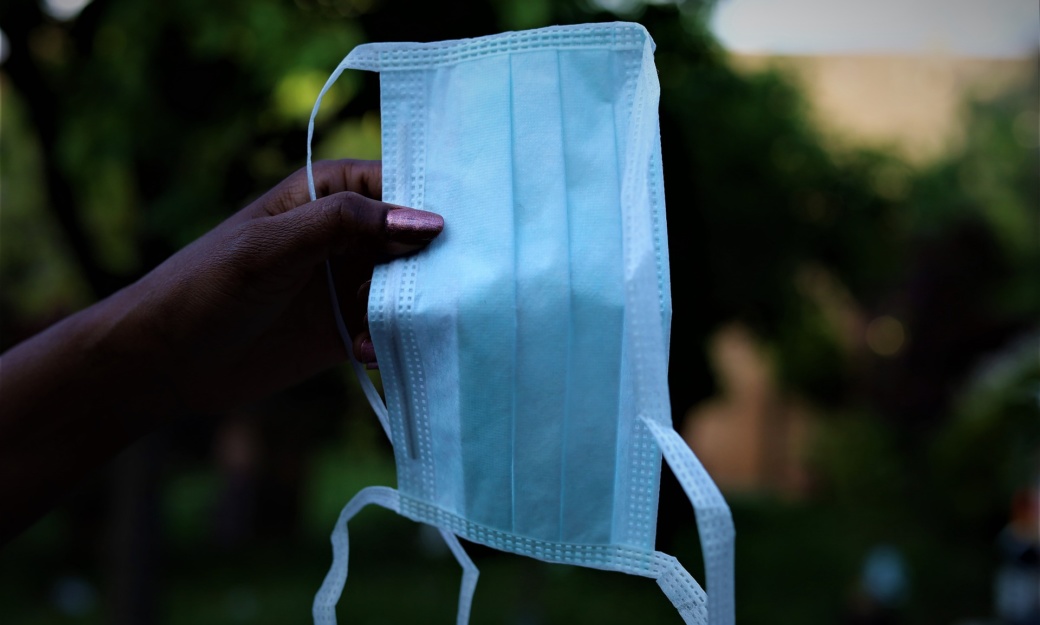
When Singapore became the country with the highest number of COVID-19 infections outside China in February, the small city-state quickly earned praise from Harvard epidemiologists and the WHO as the “gold standard” for its “near-perfection detection” of the virus, and it seemed that all was achieved without going into extreme lockdown. By late March, as the pandemic exploded into epic proportions in Italy and the U.S., Singapore had less than 1,000 cases.
But Singapore’s containment strategy was differentiated based on nationality. Each day, the government released coronavirus statistics, which were broken down into imported cases (averaging zero in the week of May 25), community cases (averaging four per day), and cases in foreign workers’ dormitories (averaging 463 per day). While borders were closed to all foreigners, Singapore citizens were encouraged to return home and quarantine for 14 days in luxury hotels paid for by the government. Foreign workers, on the other hand, were isolated in their dormitories. To break the spread in dormitories, healthy workers were relocated to military camps, a repurposed exhibition center, vacant public housing apartments, and offshore floating lodgings.
By mid-June, Singapore's infection numbers had crossed the 40,000 mark. Ninety-four percent of patients were foreign workers. Singapore’s story is a cautionary tale of what could happen when foreign workers and minorities are not included in the pandemic response.
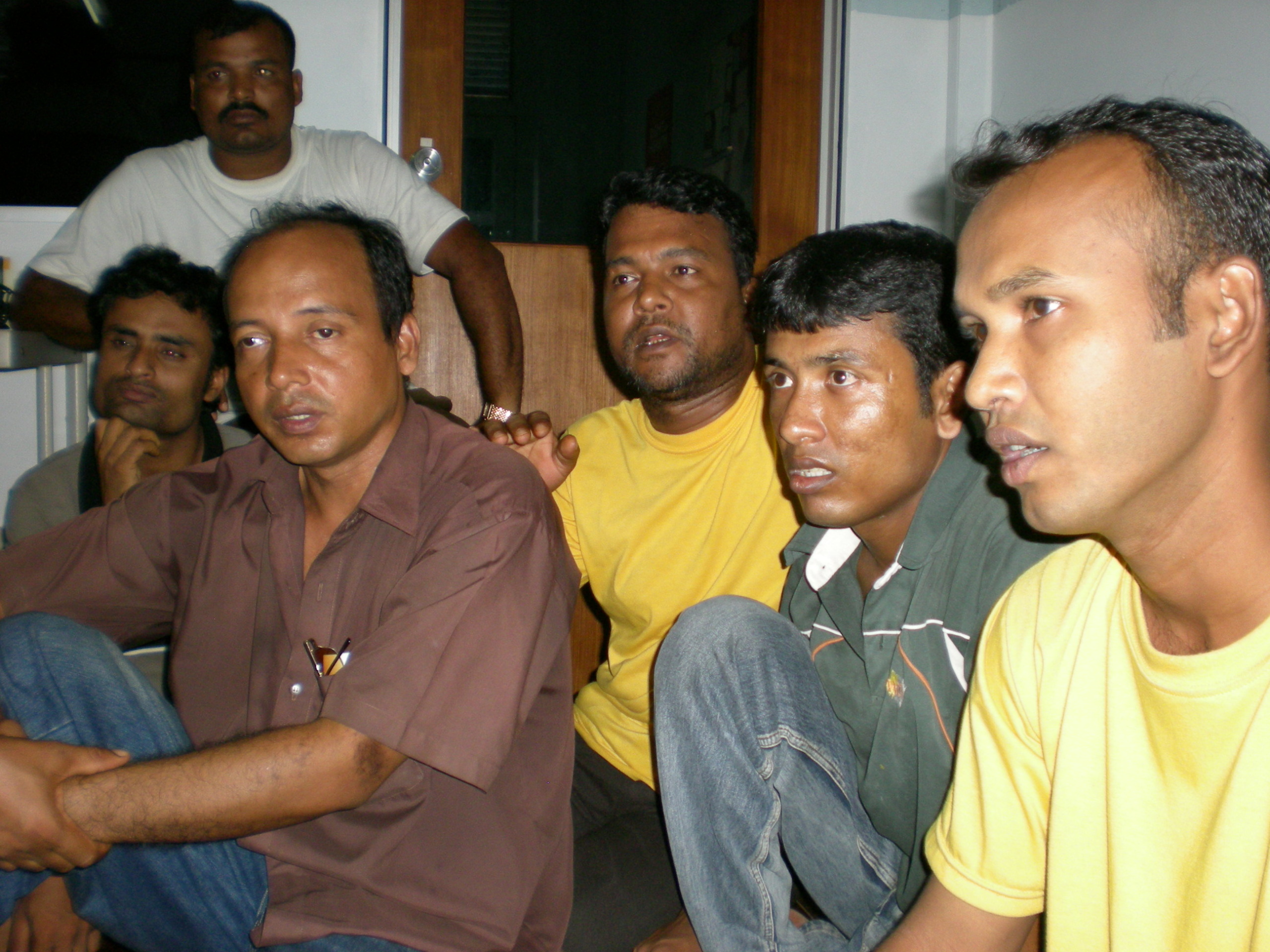
These workers from Bangladesh came to Singapore to earn better wages to improve their lives but now most are returning home in debt. (BBC World Service / Flickr)
Singapore is not alone in having a strategy that prioritizes its own citizens. Countries around the world are using the pandemic to crack down on migrant workers, undocumentend immigrants, and refugees. On May 1, Malaysia arrested over 586 undocumented immigrants, including many Rohingya refugees from Myanmar. The police claimed that the raid was intended to prevent illegal immigrants from spreading the virus by moving across the country. Italy tried to halt the flow of immigrants entering Europe from Africa via the Mediterranean Sea, while the U.K. has been attempting to stop record numbers of people making their way across the Channel from France. The U.S. shut its borders to foreigners, detaining and deporting immigrants.
Zakir Hossain Khokan came to Singapore from Bangladesh in 2003. He is among nearly a million foreign work permit holders hired in the manufacturing, marine shipyard, construction, and process sectors. He works 12-hour shifts for minimal wages, before returning to his poorly ventilated dormitory to sweat through the night in 80-plus-degree heat, 12 to 20 people to a room. "If I do overtime, I have money," he said. "If no overtime, I have no money.”
When the coronavirus first hit the city, the government response was swift. Singapore was one of the first to shut its borders to China. Temperature scans were implemented at all ports of entry, contact tracers tracked down every possible suspect so targeted quarantines could be imposed, and social distancing was enforced. Masks became mandatory and were distributed for free to residents at community centers and residential blocks.
But foreign workers like Khokan did not receive those free masks. On April 11, Khokan's Indian roommate contracted the novel coronavirus and was taken to the hospital. That should have raised an alarm in the dormitory, but Khokan said he and his roommates were allowed to continue living in the same room. Two days later, Khokan fell ill. When he informed the building’s security officer, Khokan was told to rest in his room.
“No one came to our dormitory to tell us what to do,” Khokan said. “The government said we must wear a mask. How? They said in the room you must maintain a one-meter distance. In a small room, there is no space to maintain such a distance. This is one kind of joke to the migrant workers.”
The explosion of COVID-19 cases among migrant workers might have been preventable, since outbreaks of the Chikungunya and Zika viruses have devastated foreign-worker dormitories in recent years. Yet nearly half of the facilities breach license conditions, which require minimum standards of living space such as a sink and a toilet for every fifteen workers. On June 1, the Singaporean government announced it would build new dormitories with better living conditions, changing the regulations to require one bathroom for every five workers and imposing a limit of ten beds per room.
Some countries are releasing immigrants kept in detention centres, which are often overcrowded and could pose a health risk during a pandemic. The United Nations, in March, urged governments to “reduce the number of people in detention” while noting that COVID-19 had begun to strike prisons, jails and immigration detention centres.
In India's northeastern state of Assam, which borders Bangladesh, around 800 people were kept in detention centers after being declared "illegal foreigners." One of them is 52-year old Asgar Ali. Cut off from the outside world, Ali didn’t know much about the pandemic until three doctors came to the camp in mid-March to tell the inmates that a new virus was making people sick.
Indian jails and detention camps are known for being overcrowded, which puts inmates at a heightened risk of catching COVID-19. A 2018 report by Amnesty International notes that, according to the detainees, there was “hardly any space to move or turnaround.” In April, the Indian Supreme Court ordered that “illegal foreigners” held in detention centers camps for more than two years could be released on bail in view of the pandemic. The court also ordered all states to consider releasing prisoners on interim bail. Some 300 detained “illegal foreigners” have been released on bail so far, including Ali.
Ali was declared a foreigner in 2017 by a foreign tribunal. For many years, individuals suspected of having illegally entered Assam from neighboring Bangladesh had to submit documents at foreigner tribunals, quasi-judicial bodies, to prove their citizenship. One such tribunal reviewed Ali’s documents and declared him a foreigner. In addition to this, in 2019, Assam concluded a massive citizenship test that required all residents to submit documents proving they are citizens, rather than immigrants who snuck in illegally. Almost two million people, many of them Muslims, were unable to do so and now face the risk of being stateless.
India, a country of 1.3 billion, imposed a country-wide lockdown on March 25, with less than four hours' notice. When factories, construction sites, and workplaces shut down, the country's 100 million internal migrant workers faced sudden unemployment and food scarcity. Since India’s public and private transportation systems were suspended, millions of migrant workers walked and hitch-hiked to return to their villages, many of them traveling hundreds of miles to get home. According to a Reuters report, nearly 200 migrant workers were killed in road accidents on their journeys home. Some died due to starvation or exhaustion. In May, the government started special bus and train services to ferry workers to their hometowns; close to 6 million of them used the trains by mid-June. By July end, India recorded over 1,583,700 cases of COVID-19, behind only Brazil and the U.S.
Journeys across borders are also becoming more dangerous during the pandemic. “States around the world have severely restricted the mobility of those within their borders and many borders have been closed completely to all but citizens," said Lara Nettelfield, a senior lecturer at the Institute for the Study of Human Rights and the Department of Political Science at Columbia University. "This, of course, has made it more difficult for people to exercise their right to seek asylum."
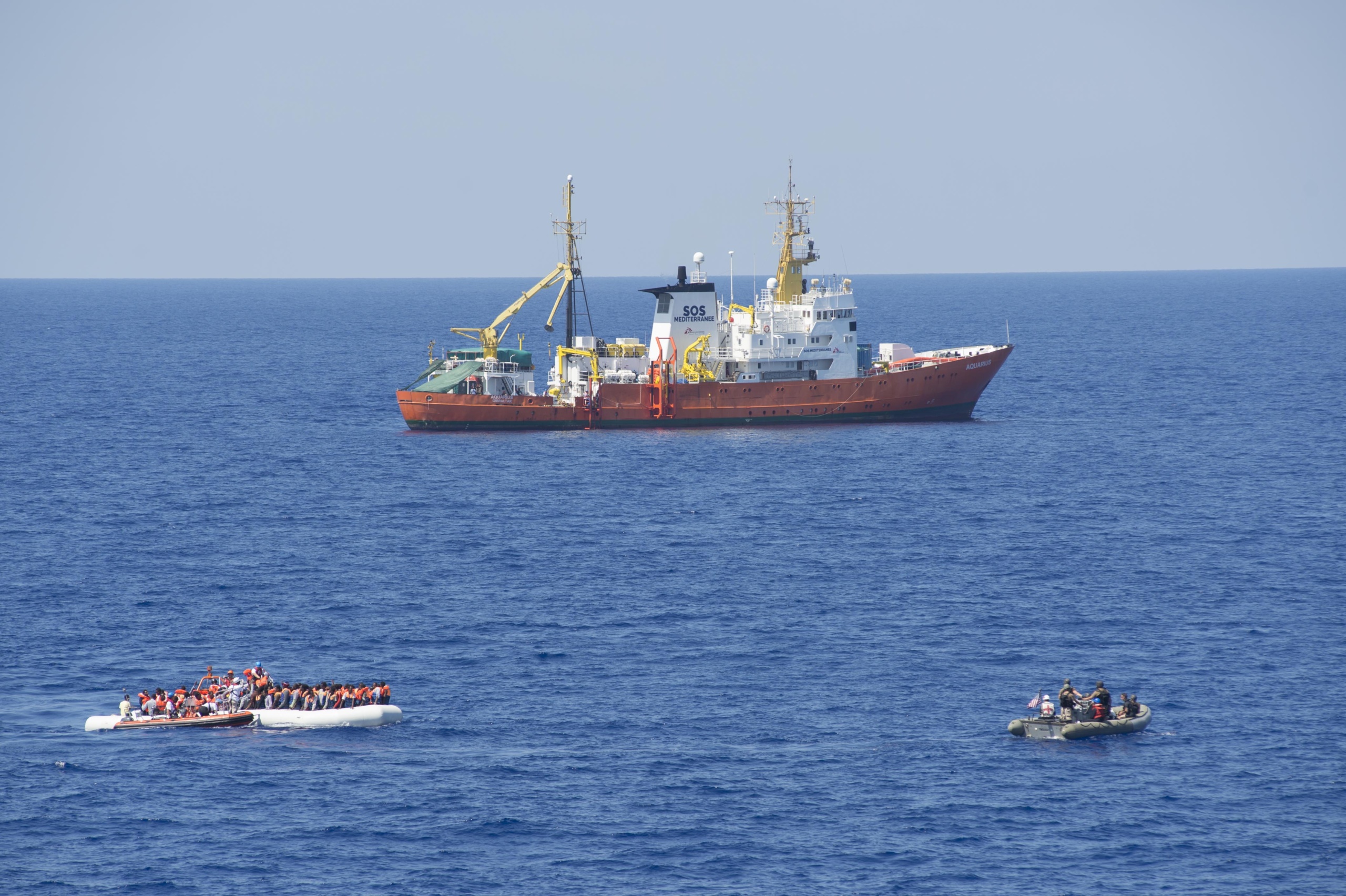
Sailors assigned to USS Carney (DDG 64) provide security while members of the SOS Mediterranee ship MS Aquarius rescue migrants on a small craft in the Mediterranean Sea July 29, 2016. (Commander, U.S. Naval Forces Europe-Africa/U.S. 6th Fleet / Flickr)
The pandemic has not stopped the flow of people leaving Africa and crossing the Mediterranean Sea to get to Europe. (According to the Dutch organization United for Intercultural Action, between 1993 and 2018, around 27,000 people have drowned at sea on this route.) But when COVID-19 turned Italy into one of the first epicenters of the pandemic, the government repatriated tens of thousands of citizens scattered around the world back to Italy; at the same time, it declared its ports unsafe, turning away asylum seekers, even those rescued from sea by NGOs. Critics have accused the Italian government of using COVID-19 as an excuse to disregard the right to asylum, which is guaranteed by the Geneva Convention.
Since the pandemic began, a record number of migrants have crossed the English Channel. Some pay smugglers up to £10,000. Most are crammed into rubber dinghies. Some have made the crossing by kayak. In early June, four men made a raft from two windsurfing boards tied together by rope and used shovels for paddles.
Typically, migrants would aim to cross from Calais to the U.K. in the back of trucks or stowed away in shipping containers, but since authorities clamped down on this form of smuggling, dangerous sea crossings have risen correspondingly. This year, over 2,000 migrants have already landed in the U.K. by boat, surpassing the number from all of 2019. According to the Times of London, many young people have been killed by drowning or were dragged into the propellers of large ships.
In May, the U.K. government launched Operation Sillath, which aims to deport migrants arriving in small boats. Some lawyers and human rights advocates suspect that migrants are being returned to France before their claims are properly considered.
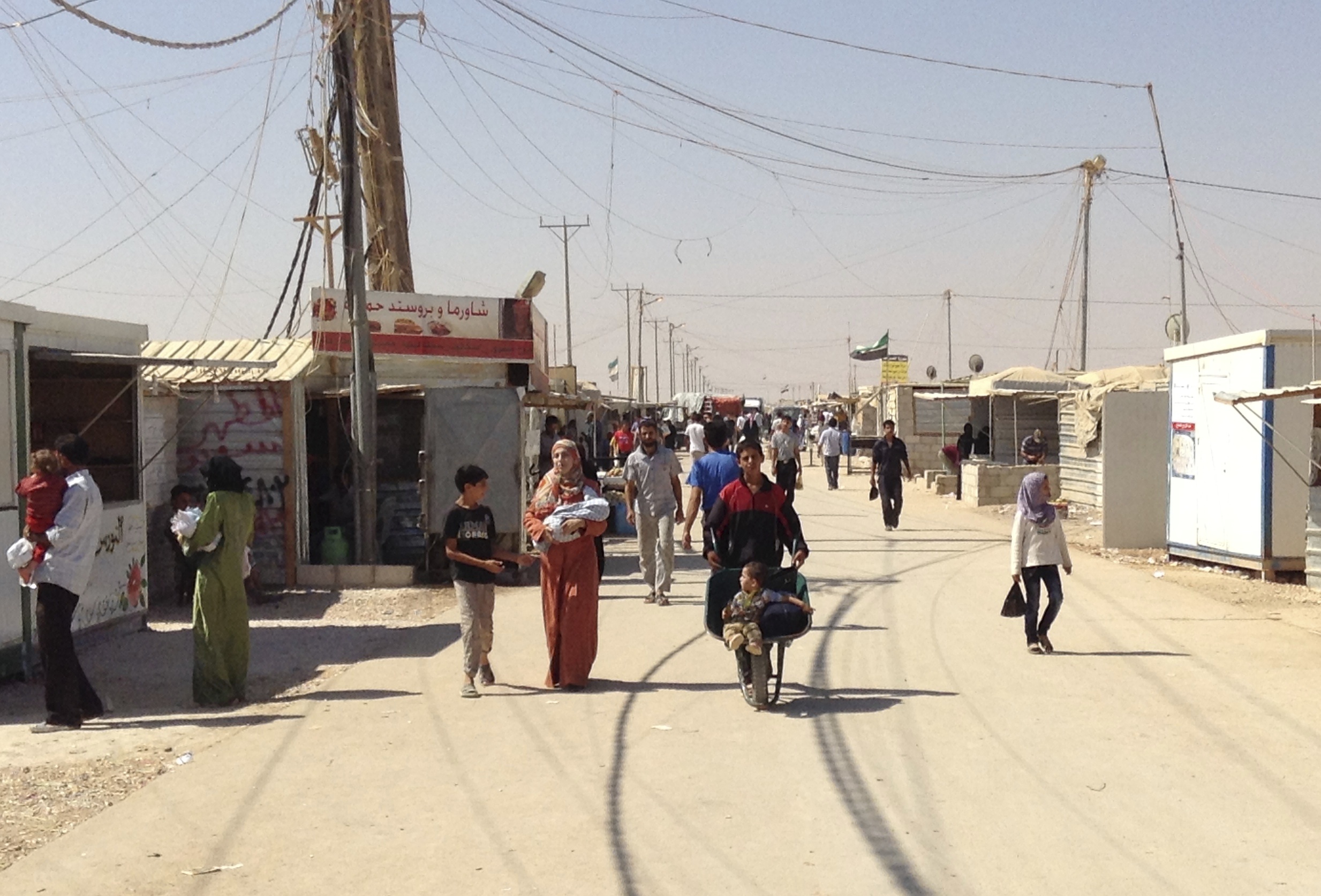
Zaatari, in Jordan, is one of the largest refugee camps in the world. (Foreign and Commonwealth Office / Flickr)
Zaatari, in Jordan, is one of the largest refugee camps in the world. Some 78,000 Syrians live in tightly cramped caravans in an area about two square miles. When Jordan reported its first case of the novel coronavirus in March, the country shut down schools, airports, and banned refugees from entering. Zaatari was closed off.
Moh'd al-Taher, who works for the United Nations High Commissioner for Refugees, moved into Zaatari just before it was closed off. "The camp is crowded," he said. "So if there's any case, it would be very difficult to keep people isolated." Thankfully, Zaatari has reported no cases of COVID-19 so far. The country has confirmed about a thousand cases and 11 deaths; Prime Minister Omar Razzaz recently claimed that Jordan has contained the coronavirus.
But Zaatari and other refugee camps depend on the UNHCR for funding. While at the beginning of the Syrian crisis nine years ago, every refugee in Jordan received funds from UNHCR, the organization currently only provides direct cash assistance for about 20 percent of the refugees in the country. Al-Taher is afraid that the UNHCR will face financial needs as the major donor-countries deal with the pandemic within their own borders. "This was one of our biggest concerns even before Covid-19," al-Taher explained. "So just imagine now after COVID-19 because the majority of the donors are busy with their internal issues."
In the United States, critics argue that the Trump administration is using the pandemic as an excuse to carry out the racist and xenophobic agenda that he articulated on the campaign trail at the expense of migrants’ human rights and in circumvention of both international and U.S. law. Immigration authorities are turning away migrants under obscure, decades-old legislation that was dusted off and invoked by the Center for Disease Control in March.
“The CDC generally has the authority under this [1944] law to prevent the introduction of a disease to the U.S.," said Sunil Varghese, Policy Director at International Refugee Assistance Project. "That authority is being used to ban everyone at the southern border, even though the disease is already in the U.S."
According to Varghese, 20,000 people have been expelled from the United States with no due process in the first half of the year. Among those who have been deported are 2,000 children. In June, Human Rights Watch called on the Trump administration to immediately suspend deportations, arguing that they are contributing to the spread of the virus.
The administration has also practically shut down the asylum-application process, and migrants are stuck at the US.-Mexico border, waiting for their appointments, according to Alma Maquitico, co-director of the National Network for Immigrant and Refugee Rights. There are “thousands waiting in camps on the Mexican side,” Maquitico said, estimating the number at 60,000.
The asylum shutdown could even impact those who are in the country legally. “Once [the asylum application] is acknowledged, you are legally in the country,” said attorney Kimberley Chongyon Motley. But the COVID shutdown means “there are thousands of asylum seekers in the country who have put applications in [who] can legally be deported because their application isn’t even being acknowledged.” Asylum applications were “slow rolled intentionally” before COVID, Motley adds. “Now, it’s even slower.”
Even in ordinary times, migrants and refugees struggle to be included and treated as equal citizens. In a global pandemic, when resources are scarce, test kits are insufficient, and even food runs out in grocery stores, migrants are often relegated to the last of priorities and excluded entirely in a crisis response.
On a balmy May day, Khokan, the Bangladeshi migrant worker in Singapore, was recovering from Covid-19 at an army camp. In a poem he wrote in Bengali, one verse captured the anxiety he felt as a migrant far away from home: “The government tells them not to be afraid. But yes, they are! They know the High Commission is only there to parcel their corpses back home.”
This article was written and reported by Columbia Politics Collective members Agostino Petroni, Heena Kausar, Isobel Thompson, Javier Sauras, Minmin Low, Mya Guarnieri Jaradat, and Regin Winther Poulsen.
 The Columbia Politics Collective is a global group of eighteen journalists from the Columbia Journalism School’s 2019-20 MA-Politics program. This is a series of dispatches on how the COVID-19 pandemic is functioning like a stress test, laying bare the strengths and weaknesses of political institutions around the world. Each article in the series will focus on a single underlying structure of government. Meet the journalists here.
The Columbia Politics Collective is a global group of eighteen journalists from the Columbia Journalism School’s 2019-20 MA-Politics program. This is a series of dispatches on how the COVID-19 pandemic is functioning like a stress test, laying bare the strengths and weaknesses of political institutions around the world. Each article in the series will focus on a single underlying structure of government. Meet the journalists here.
